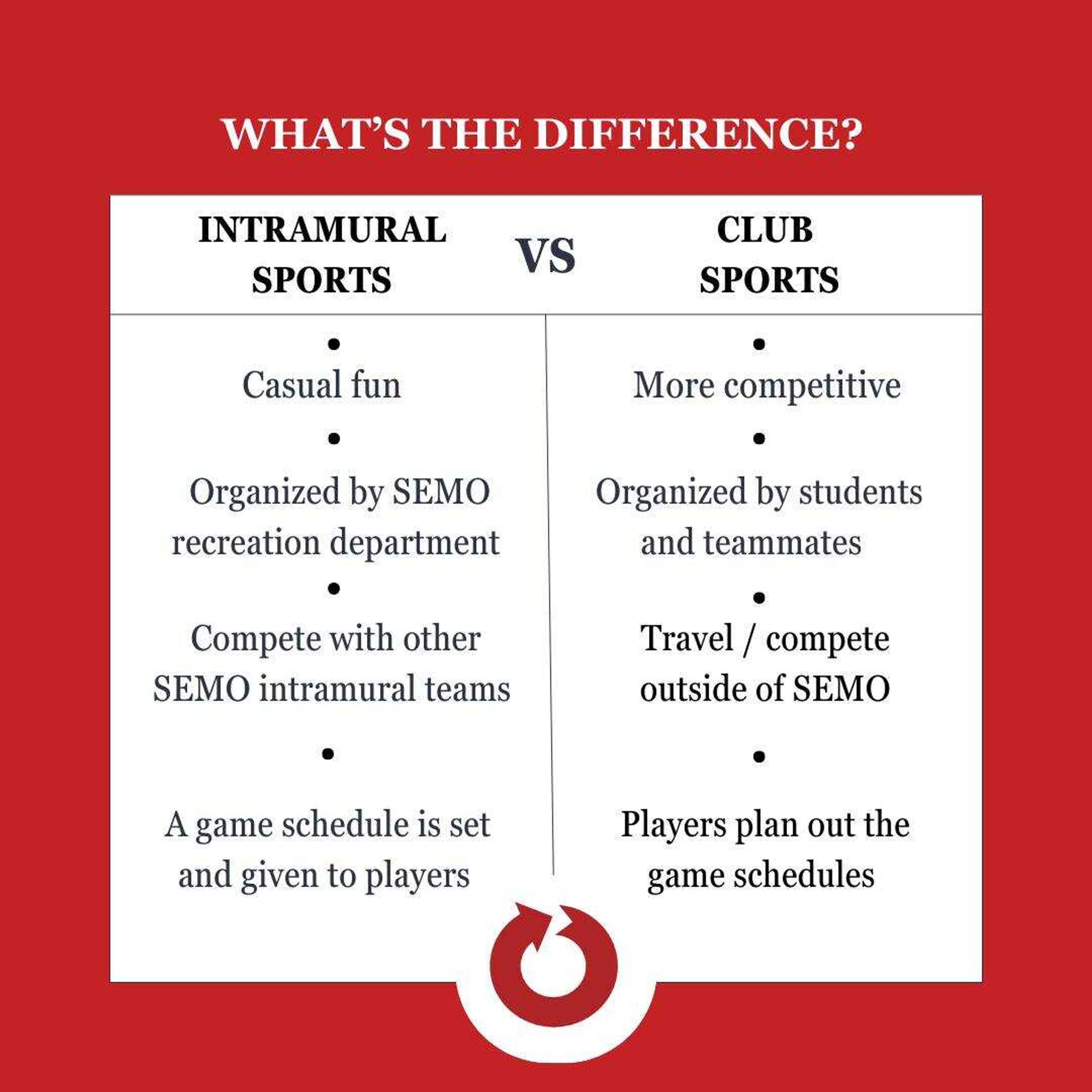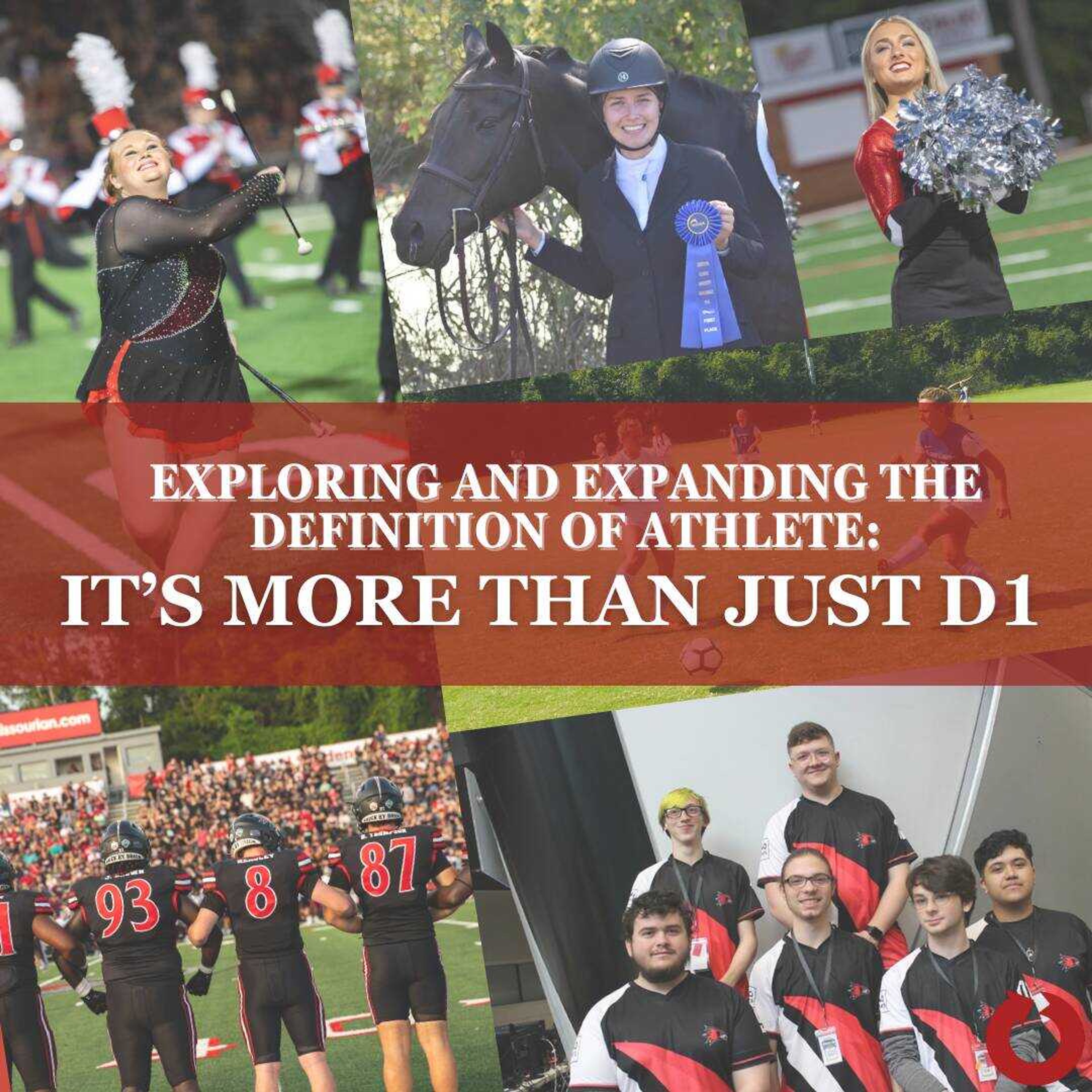Exploring and expanding the definition of athlete: It’s more than just D1
From the packed stadium of home football games to the hype surrounding March Madness, college athletics are an important aspect of life for many people at SEMO. Despite the popularity of attending athletic events, less than 4% of SEMO’s student population plays Division 1 (D1) or full-time athletics, according to institutional research.
From the packed stadium of home football games to the hype surrounding March Madness, college athletics are an important aspect of life for many people at SEMO. Despite the popularity of attending athletic events, less than 4% of SEMO’s student population plays Division 1 (D1) or full-time athletics, according to institutional research.
However, 4,753 students at SEMO—almost half of the student body—are involved in intramural and club sports. Although there are several key differences between D1 athletics and other athletic activities, they require many of the same skills and traits.
For D1 athletes, life revolves around practice. Men’s basketball coach Brad Korn said during practice season, student athletes spend a majority of their time outside of class practicing and training, with one day off a week. Korn said it can be difficult to keep up with the practice schedule as well as academics.
“They’ve got to come in and do well in the classroom and do well on the court and do it again the next day,” Korn said. “We’re here when everyone goes home for finals in between the two semesters. So it really covers a long, long stretch and they don’t get to just go home or check out for a month.”
There are several options available for students who want to get involved with athletics but don’t want to or aren’t able to be a full-time athlete. Director of Recreational Services Eric Redinger said intramural sports are open to everyone, not just Greek life, and are easier for many students to participate in since teams and games are scheduled by SEMO. Club sports are similar, but teams compete against other schools and are student-organized and -led, and are open to all students, faculty and staff.
Redinger said there are many benefits, both physical and mental, which result from athletic involvement.
“If you’re a student and you’re involved, whatever that happens to be, you’re far more likely to be successful and graduate, and it just enriches your life. I always want students to get involved,” Redinger said.
Redinger said he defines an athlete as anyone who is training, whether or not they are actually competing.
“I consider esports participants athletes, because they’re training,” Redinger said. “I call those sports, and it confuses people sometimes because they think of them as games. But it's still a sport—it’s just that it’s a skill sport, not necessarily a physical sport like some others might be.”
With over 500 members, eSports is the largest club on campus run by recreational services, and allows students to play video games competitively. Assistant Director of Competitive Sports and Conferences Ricky Reed said esports requires many athletic traits such as response time, hand-eye coordination, gameplay knowledge, and performing in high-pressure situations.
eSports club officer and education major Lizzy Hall said her role involves similar teamwork and planning skills as traditional sports, however, the activity is more accessible to people with disabilities or who need accommodations.
“It’s just different in the sense that we’re not doing it physically; we’re doing it online, competing in leagues just like traditional sports do. It’s still some of the same things, just in a different setting,” Hall said.
Non-competitive activities can still require serious athleticism and physical dedication. Junior music education major and marching band member Joel Prange said he sees marching band as a blend of athleticism and entertainment, and believes marching band members and sundancers are athletes.
From an early week of practice involving 13-hour days to the breath and body control and playing technique required to simultaneously march and play an instrument, marching band takes a skill set which combines mind and body in a unique way other athletes might not experience.
“There’s kind of a balancing act: we have to be as relaxed as we would be if we were sitting down and playing our instruments, but we have to be as strong as we would if we were running a mile,” Prange said.
Marching band is open to essentially anyone who applies, Prange said, and while it can be a challenge to work with people of significantly varied skill levels, it can be rewarding to see enormous growth and progress in new members.
“I’ve seen so many people succeed in our marching band. The improvement is just amazing, and it really is a team sport; everyone contributes, and I think it’s great that we can allow everyone to contribute.”
While the definition of what activities are considered athletics may vary from person to person, SEMO students find ways to push the envelope and express athleticism in ways that go far beyond D1.







